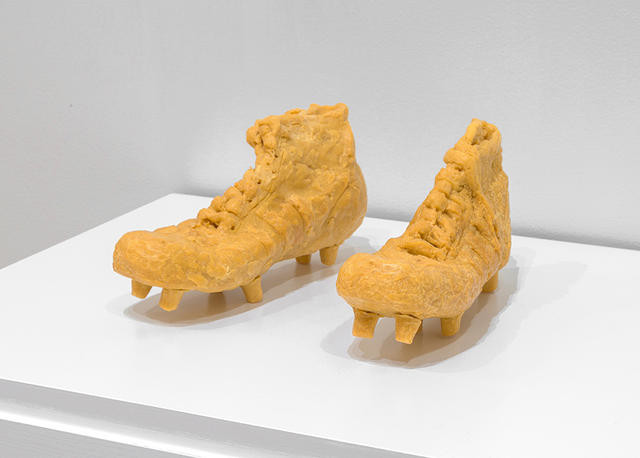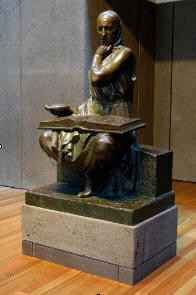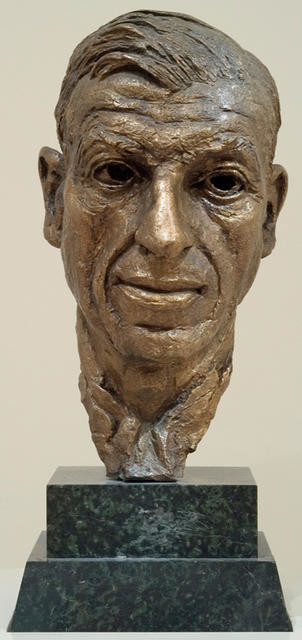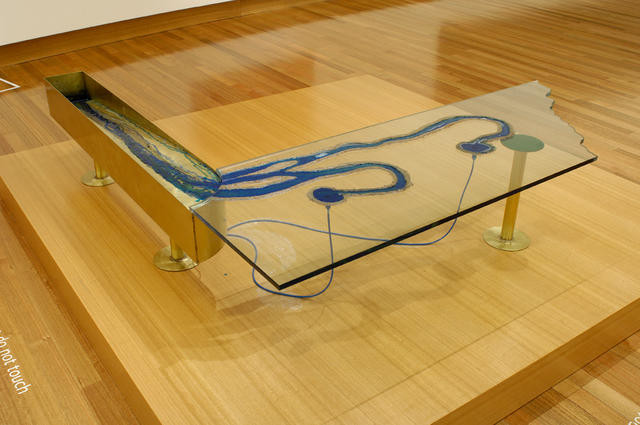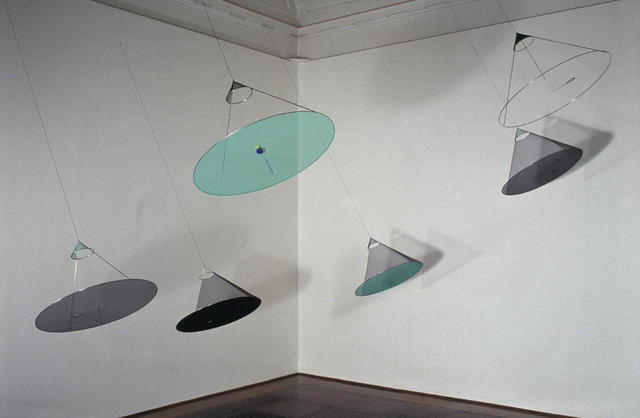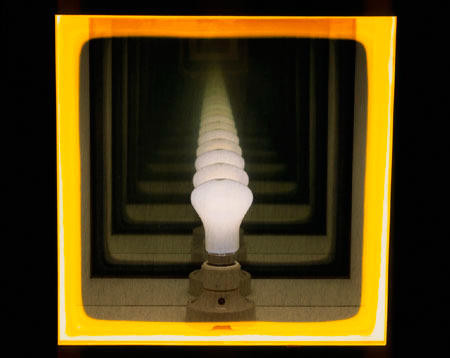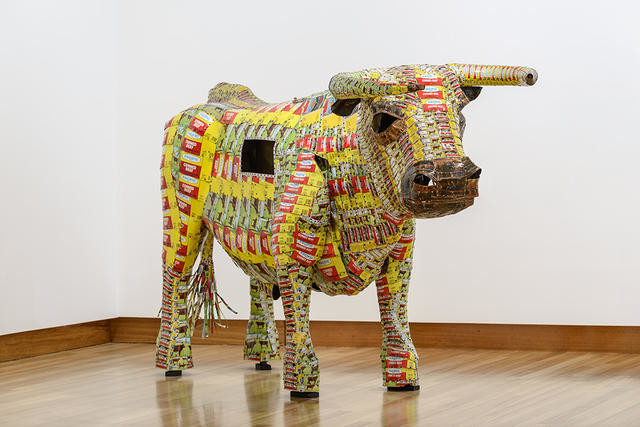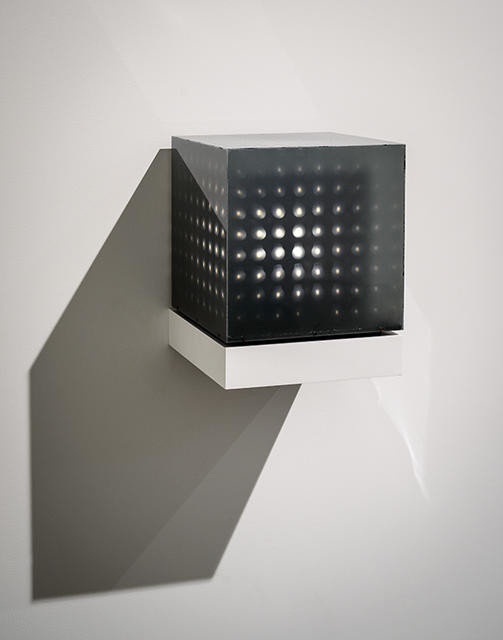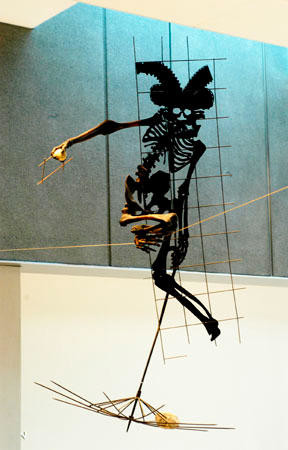B.
The Sculpture Collection
Collection
The first encounter most Robert McDougall Art Gallery visitors have with the Sculpture Collection is passing Ex Tenebris Lux (1937), Ernest George Gillick's bronze figure of a reading woman, on their way to the Gallery's front entrance. This work's title and subject, symbolising enlightenment and literally translated as "from darkness, light", is an appropriate maxim for an art museum, but Gillick's sculpture has another, historical, significance. Originally sited within the Sculpture Court (now called the Centre Court) of the Gallery, Ex Tenebris Lux was donated in 1938 by local biscuit manufacturer Robert E. McDougall, who had gifted the funds to build Christchurch's public Art Gallery almost ten years before.
McDougall, concerned at the paucity of sculpture in the Gallery's Collection, had written to the Director of the University of London's Courtauld Institute, William Constable, in 1937, asking him to select and purchase a work of contemporary sculpture on his behalf. Constable chose Ex Tenebris Lux, which had recently been exhibited at London's Royal Academy. Ernest Gillick (1874 - 1951) had become renowned as a sculptor of memorials and had received several public commissions, including the Glasgow War Memorial and the Memorial to the Missing at Vis-en Artois, France.
Like Ex Tenebris Lux, many of the most significant historical works within the Sculpture Collection have been gifted rather than purchased, with perhaps the most notable being the two Rodin bronzes, Eternal Idol (1889) and Psyche (c. 1900). These works, cast in the early 1960s and issued by the Musée Rodin in Paris, were purchased in 1962 by the Government through the New Zealand Fund in France for Cultural Development. This fund had been established ten years before from the French war debt settlement account with the intention of encouraging cultural relations between New Zealand and France. The bronzes, together with a tapestry by the celebrated French artist Jean Lurçat, were toured throughout New Zealand between 1962 and 1964. After the tour, it was agreed by the Government that Christchurch Art Gallery Te Puna o Waiwhetū was the most suitable institution to retain the bronzes, while the Lurçat tapestry was presented to the Auckland Art Gallery.
Another significant bronze in the Gallery's Collection is a portrait of Air Marshal Viscount Portal by the renowned American-born sculptor Jacob Epstein (1889 - 1959). After studying at the Ecole des Beaux Arts and the Académie Julian in Paris, Epstein moved to London in 1905 and became a British citizen soon afterwards. He was both famous and notorious for his controversial sculptures, which were attacked by critics and the general public for their distortion of the human figure and often challenging subject matter. Less provocative were Epstein's portraits in bronze and in 1942 he was chosen by the British Ministry of Information to model from life a series of portraits of notable contemporary war leaders. A limited casting of each was made and the bronze of Viscount Portal was bequeathed to the Gallery in 1979 by Maureen Chute Raymond, whose other donations to the Collection include an etching by Rembrandt van Rijn and lithographs by Pablo Picasso and Marc Chagall.
There are few marble sculptures in the Collection, but one of the most notable is Beatrice (c.1914) by the Italian artist Alfredo Biagini. The subject of this work is the woman whom the 13th century poet Dante described as "the glorious lady of my heart". Beatrice, who was thought to be the daughter of Folco dei Portinari, a distinguished Florentine, was immortalised in Dante's Vita Nuova, a series of passionate love poems. Biagini was born in Rome and studied at the Academy of Fine Art there before moving to Paris. Figures and animals in bronze or marble were his forte and, as a result of his academic training, he often chose subjects from literary sources.
In addition to these international works, the historical Sculpture Collection also includes works by several significant figures in Canterbury's art history, including Francis Shurrock, Charles Kidson, Chrystabel Aitken and William and Claudius Brassington.
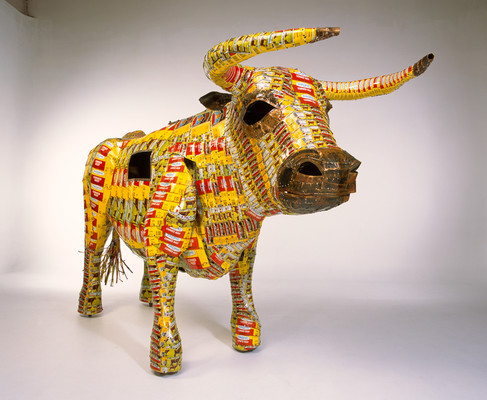
Michel Tuffery Povi Christkeke 1999. Mixed media: flattened "corn beef" tins, "Christmas tree lights", wooden frame. Collection of Christchurch Art Gallery Te Puna o Waiwhetū, purchased 1999. Reproduced courtesy of Michel Tuffery
In 1983, the Gallery established a policy of occasional sculptural commissions for the Centre Court. The first of these projects (which were supported by the Queen Elizabeth II Arts Council) was undertaken by Canterbury artist Bing Dawe, who completed Still keeping his balance he used the umbrella as a safety net - image of a man with a missile, a sculpture symbolising the absurdities of the nuclear arms race, in 1985. The Gorse King, a 31 piece sculpture in Oamaru stone by Denis O'Connor, was completed in 1992. In 1995, as part of the commissioning programme, Andrew Drummond produced For Beating and Breathing, an exhibition of pseudo-medical, machine-like ‘devices', one of which was acquired for the Sculpture Collection.
Besides more conventional floor or plinth-based work, the Collection also includes a number of suspended sculptures, such as those by Canterbury artist Neil Dawson. The five Dawson assemblage pieces owned by the Gallery include Seascape (1979), a large installation made from stainless steel piano wire, green and black nylon mesh, custom wood and blue, yellow and black acrylic paint. Two light-based works, Celeste (1970) and Reflections 1 (1971), by Bill Culbert also attempt to extend the definition of sculpture beyond the third dimension.
One of the most visually striking contemporary sculptures in the Collection, and certainly the most popular with young visitors, is Michel Tuffery's Povi Christkeke (1999). This life-sized bull is constructed entirely out of flattened corn-beef tins and combines a festive appearance with a serious message about the health problems caused in Polynesian societies by the replacement of the traditional diet with Western convenience foods. The Gallery's bull was built especially for the Collection, but others like it have been used by Tuffery in a series of high-profile performances. The bulls, decorated with flashing Christmas tree lights and with smoke pouring from their mouths, ‘charged' each other down city streets, pushed by Tuffery's assistants and supported by Samoan drumming, dancing and cheering crowds.
Another sculpture fusing unusual materials with a concern for social issues is Mummy's boy- smells like team spirit (c.1995), by Grant Lingard (1961 - 1995). Lingard gained prominence during the early 1990s with sculptures that combined an often whimsical appearance with acerbic satire to consider the experience of homosexual men in New Zealand. This sculpture, consisting of a pair of rugby boots made from that familiar New Zealand laundry staple, Sunlight soap, suggests an uncomfortable fit between a homosexual lifestyle and the limited possibilities for male expression provided by New Zealand's rugby dominated culture. Another, more sinister interpretation, that the yellow soap alludes to the persecution and subsequent extermination of homosexuals in Nazi Germany, is also possible.
Also concerned with issues of identity and power, Jacqueline Fraser's delicate fabric and wire sculpture The benediction of Goat Island our Saviour: A long view of our very blessed saviour from a distance (with goats rampant) (1998) uses a variety of materials from contemporary culture, such as electrical cables, wire, chiffon and pearl-headed pins, to suggest elements of traditional Maori culture, such as tukutuku panels or string games. Goat Island, or Mapoutahi, was the site for an important pa that was returned to Ngai Tahu by the Crown in 1997 as a cultural resource. At the time of the return, the island was described as being "more precious than a diamond tiara", a sentiment Fraser has incorporated into this work.
In Christine Hellyar's Body Parts: White China Cupboard 1989-1990 the artist has filled a wooden cupboard with white china clay objects, using the conventions of museum displays to give the objects the aura of rare artifacts from previous cultures. The objects she has made for this work are plaster moulds relating to food and include kumara and dinner plates.
Although one of the smaller of our Collections, the Gallery's holdings of sculpture contain the most diversity across medium and subject matter. It is the Collection that will perhaps benefit most from increased exhibition opportunities at the new Christchurch Art Gallery.
Felicity Milburn
